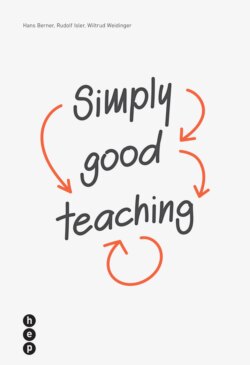Читать книгу Simply good teaching - Hans Berner - Страница 18
На сайте Литреса книга снята с продажи.
ОглавлениеLEARNING THROUGH DIRECT INSTRUCTION
The most important forms of learning-oriented teaching
The term direct instruction is understood as a whole range of activities whereby an instructor directly interacts with the students. Direct instruction is often described as frontal or classic lecture format, presentation or teaching by instructing. In broader terms, it is also described as teacher-oriented type of lesson. As these terms are not selective and self-explanatory, it appears useful to describe a listing of the discussed forms of direct instruction or synonymously referenced direct lessons in this chapter.
Direct lesson means primarily, to tell or read something to the students, to present and discuss a topic. For instance, in a short presentation, information, facts, and context are presented or the teacher explains something, such that facts and connections are plausibly and comprehensibly presented and made understandable. However, direct instruction also means to show procedures and techniques – even thought processes – to comment on what has been shown and to prompt the learners, if need be, to imitate them. This includes various forms of illustration – for example, showing or visualizing an issue with pictures, sketches, photographs, videos or models. Ultimately, teacher-directed talks and discussions would also count as direct instruction, as well as tutorials and working together with the help of questions.
Even based on a current understanding of didactics where the concept of learning is understood as a personal and active construction of knowledge and meaning, the referenced forms of direct instruction are essential and must therefore be presented in the context of good teaching.
